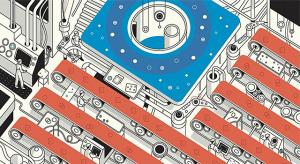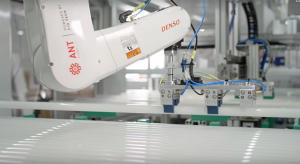All Features

Jason Chester
The Covid-19 pandemic has hit every industry with a barrage of challenges. The impacts on the manufacturing sector are already extending far beyond factory walls. And for now, the depth of those impacts and the expectation for recovery are unknown.
Fortunately, manufacturers are a highly adaptable…

Jim Benson
Every endeavor we undertake starts with a goal. A goal starts as an idea, which morphs into a desire, which becomes a goal. Ideas are vague, desires are inspiring, and a goal is actionable inspiration.
A goal is not a plan. A goal should not be overly specific. And a goal should be deeper than a…

Harish Jose
In today’s column, I am looking at wu wei, which is an important concept detailed in the Chinese classic text, Tao Te Ching. This term is generally translated into English as wu = no, wei = action, or no action. There are other similar concepts in Taosim such as wu shin or no mind.
Alan Watts, the…

Sensei Friedrich Fachidiot
Mea culpa! I have a reputation for mercilessly bashing management, but I’ve finally come to realize that I owe executives an apology.
As I have been constantly reminded in my career, these are very busy, very bright people. This column is a peace offering of my unique, executive quality-…

Ken Maynard
When educational and public sectors consider applying a proven method like lean Six Sigma, the perception persists that this “manufacturing program” will not work in a nonmanufacturing environment. Along with that limiting assumption, there is an underlying expectation within the service industry…

Jesse Allred
Imagine a manufacturing facility prioritizing cleanliness and organization—aisles are kept clear, equipment is well maintained, the plant floor is regularly cleaned, operators can easily locate tools, and materials are always stored in the right place. All employees contribute to managing work…

This is supposed to be trade-show season. The time when companies send their employees to industry tech shows and user-group meetings to see and experience the latest offerings in their field. A time when companies expend a good portion of their budget on booth space, shipping costs, and hotel and…

Gwendolyn Galsworth
In a recent article I discussed the traditional 5S audit, shared a set of reservations, and offered some remedies—“The Five Tweaks,” as I called them. Remedies are important because most of you have a vested interest in continuing regular audits but want them to be successful and more valued. The…

Kevin Meyer
A couple weeks ago a consultant friend of mine, who coincidentally focuses his practice on lean in healthcare, was complaining about issues with his healthcare providers. It’s a story we hear often: doctors running late, very short and often superficial consultations, a rush to diagnosis, and a…

Ben Aston
A large portion of a digital project manager’s job is making sure the right parts of the project are being worked on. Projects need to be prioritized. Tasks within projects need to be prioritized, too.
Plan View’s Project and Portfolio Management Landscape Report found that prioritization was…

Nico Thomas
Each new year brings about a period of reflection, where one can think back on the path that the previous year took us on. 2020 represents an even larger opportunity for reflection as the world enters a new decade. Reflection provides an opportunity to learn and improve, and extends beyond just an…

Gwendolyn Galsworth
Let’s talk about the 5S audit, a mechanism many companies use as their major means to stimulate employee creativity and trigger continuous improvement.
There are three fundamentals of the 5S audit.
First: It is an audit and therefore has limited capability for stimulating anything but compliance…

Jody Muelaner
The seven basic tools of quality are a standard set of graphical methods for improving quality. They can help with understanding variation and determining the root cause of errors in processes. The seven basic tools are most commonly used within lean manufacturing. All of the tools are graphical…

Donald J. Wheeler
Lean production is built on the explicit assumption that each step is operated predictably and capably. Predictable operation can only be achieved and maintained by using process behavior charts. But short production runs make it hard to see how to use process behavior charts. Parts one and two…

William A. Levinson
Almost half of Americans work in low-wage jobs despite the nation’s low unemployment rate. Aimee Picchi, writing for CBS News, cites a Brookings study that says “44 percent of U.S. workers are employed in low-wage jobs that pay median annual wages of $18,000.”1 A Bloomberg story adds, “An estimated…

Casandra Robinson
Perhaps for as many as 40,000 years, people have been protecting their feet with some type of covering, initially using animal hides and fur. Today, footwear has become high-tech, sophisticated, and in some cases smart, incorporating sensors that communicate with apps on your phone. Much of the…

Harish Jose
As readers of my columns know, I am an ardent student of the Toyota Production System (TPS). One of the core philosophies of TPS is kaizen, often translated from Japanese as “continuous improvement.” It is the idea that one should continuously find ways to eliminate nonvalue-adding activities, and…

Paavo Käkelä
After two decades of offshore productions in low-cost countries, manufacturers are now struggling with the rapidly growing salaries and countereffects of cheap production. The question that industries are asking today is: Do we continue offshoring, or should we consider reshoring?
The right answer…

Phanish Puranam
Machine learning, the latest incarnation of artificial intelligence (AI), works by detecting complex patterns in past data and using them to predict future data. Since almost all business decisions ultimately rely on predictions (about profits, employee performance, costs, regulation, etc.), it…

Jim Benson
‘It’s the shoes!” Spike Lee yelled into the camera on the Air Jordan ads.
But it was never the shoes. Michael, Magic, and LeBron would have outplayed their leagues in golf cleats.
It was never the shoes.
But it was us, the salespeople. In our case, the intelligencia that “trains” people to be…

Gwendolyn Galsworth
Two of my articles (the first regarding standards, standardization, and standard work; and the second on visual standards) drew a lot of response. Readers were kind enough to share their thoughts and definitions. Some offered new terms to include in the mix: standardized work and visual standard…

Dirk Dusharme @ Quality Digest
Government bureaucracies are inefficient. They waste taxpayer dollars, and they have no incentive to improve. We’ve all heard and probably repeated these axioms about wasteful government spending.
And it’s often true; you don’t have to look far to find examples of government overpaying for products…

Ryan E. Day
Lean: an employee-championed method of waste reduction. Six Sigma: a robust method of defect reduction. Embracing both methods provides organizations with multiple tools for continuous improvement. Developed for manufacturing, lean Six Sigma has now been recognized by government agencies as a…

Taran March @ Quality Digest
At the University of California at San Diego, lean concepts have taken hold. Along with its process improvement curriculum, the university applies what it teaches through initiatives around campus. Projects both complex and simple tackle the snags, waste, and bottlenecks of academic life. Students…

Ryan E. Day
Lean looks at ways to reduce waste and improve flow. The principles are relevant to virtually every organizational sector and vertical. It’s no surprise, then, that so many organizations tout lean and devote resources to lean initiatives. But, too often, there is a tendency for a company to promote…